Despite a month of heat and drought until the recent week, the garden is quite glorious to my eye, in particular for early August when the worst is expected. Yes, the lawn is worn, part brown, at least those areas not overrun by lush expanses of clover, but that is not much of a bother.
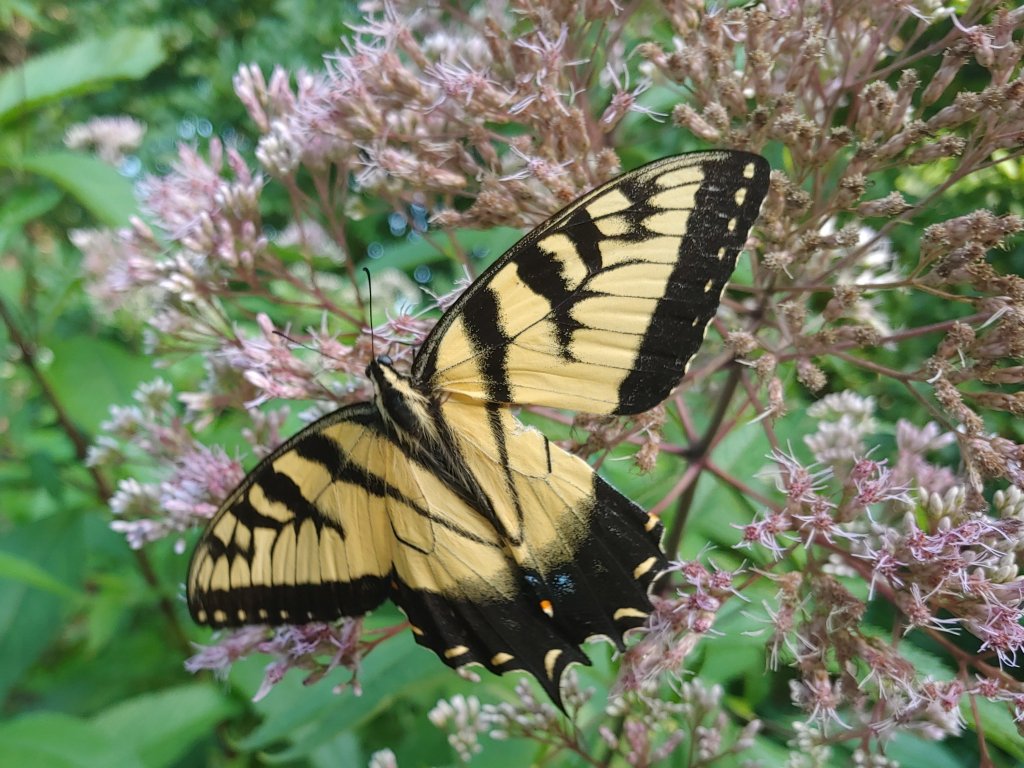
The garden remains colorful, though certainly not to compare to May, and sunny parts are alive with swallowtails (above), bees, and wasps. The few Japanese beetles (only a few) have gone, and the area surrounding the koi pond is lively with dragonflies defending their ill defined territories.

Whatever color there is in the garden in August comes mostly from shrubs and perennials, and not from non-hardy annuals. Two gingers (Curcuma, above) are potted and overwintered indoors, and there are two pots of lantanas on the deck, but I am not energetic enough to replant every spring, so the color that’s here is the same as every other year.
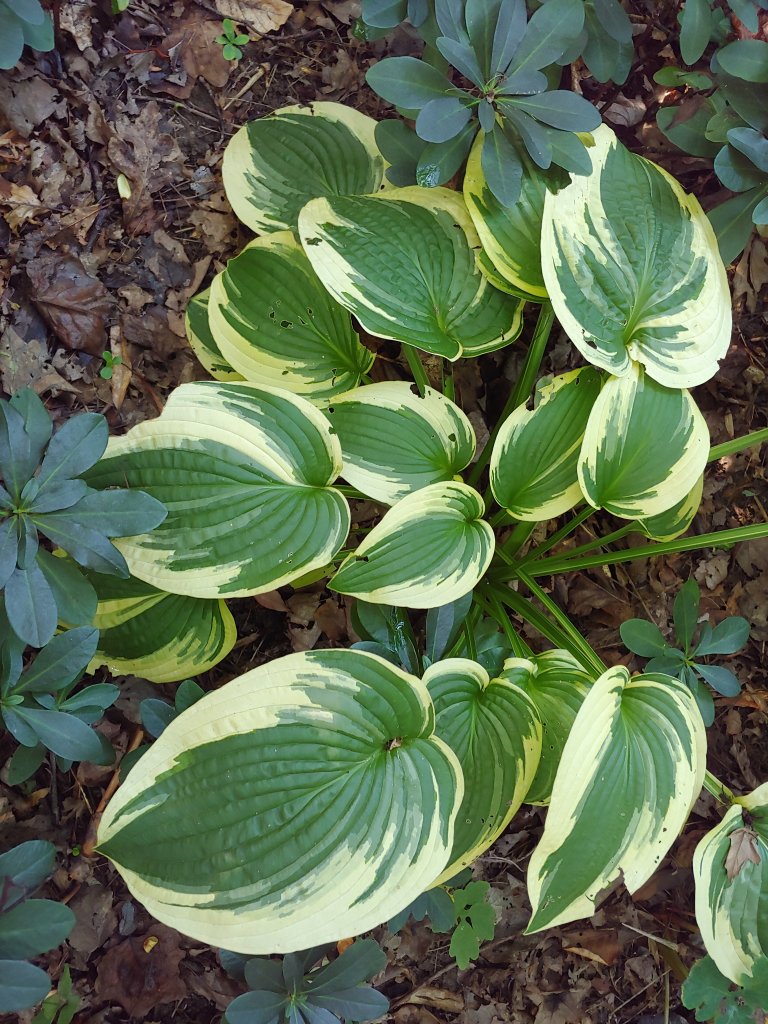
Are flowers more plentiful this summer, or has the disruption to our daily lives inspired a greater appreciation of the garden’s beauty? Below are flowers seen in the garden today, though not all since there are many more hydrangeas, and with only a few flowers so far, the flowering cycle of toad lilies (Tricyrtis) has just begun.

This is a splendid year for hydrangeas, with a mild winter not damaging flowering stems (above). As mopheads and lacecaps fade, panicled hydrangeas begin their long flowering season.
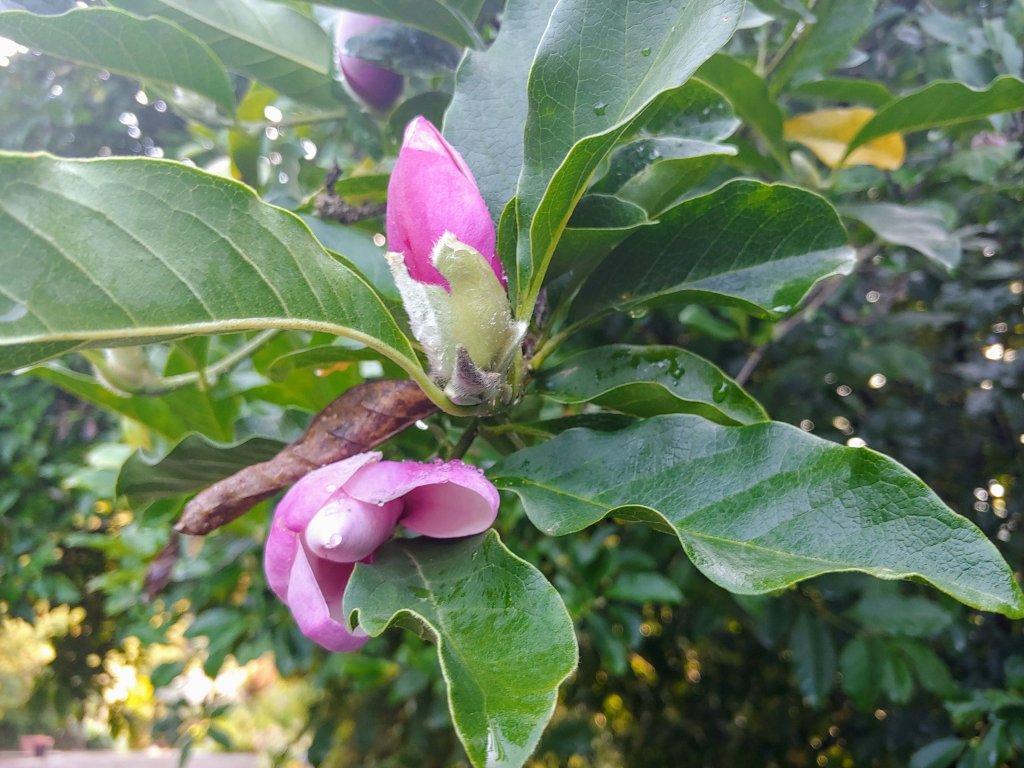
‘Jane’ magnolia’s season of glory is early spring, but there is scattered color through the summer. In summer heat blooms rarely open fully, and summer flowers do not detract from the abundance of spring’s blooms.
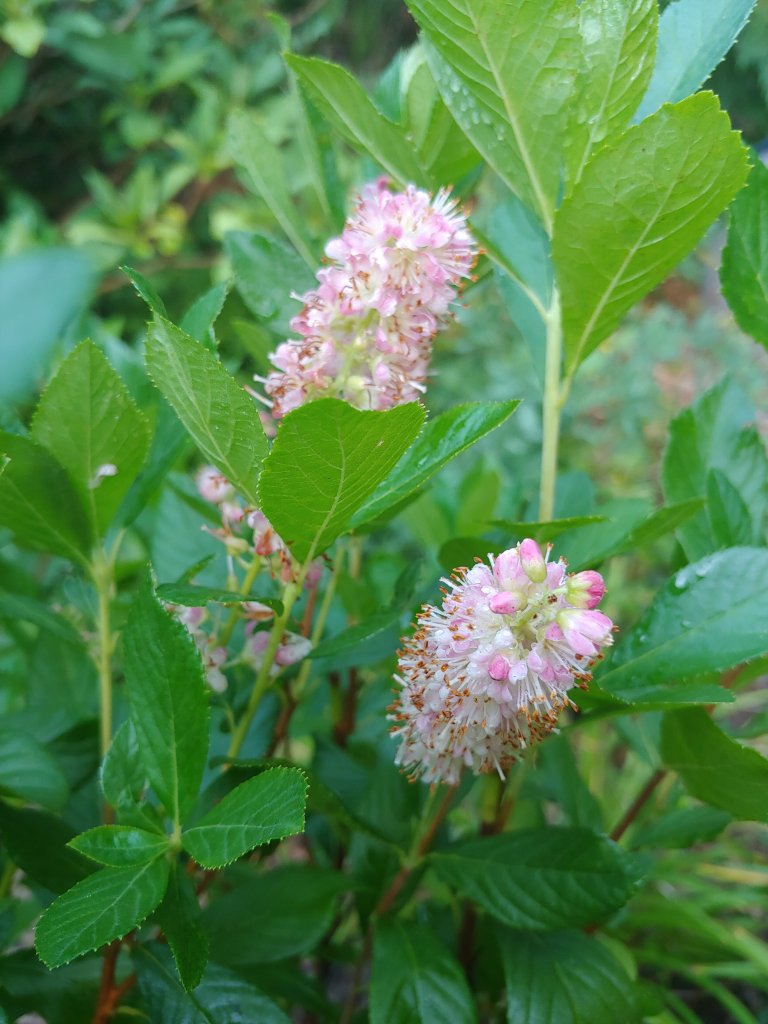
The pink flowered summersweet ‘Ruby Spice’ (Clethra) grows in dry shade or damp ground in full sun, the same as white flowered summersweets (‘Hummingbird’, below)
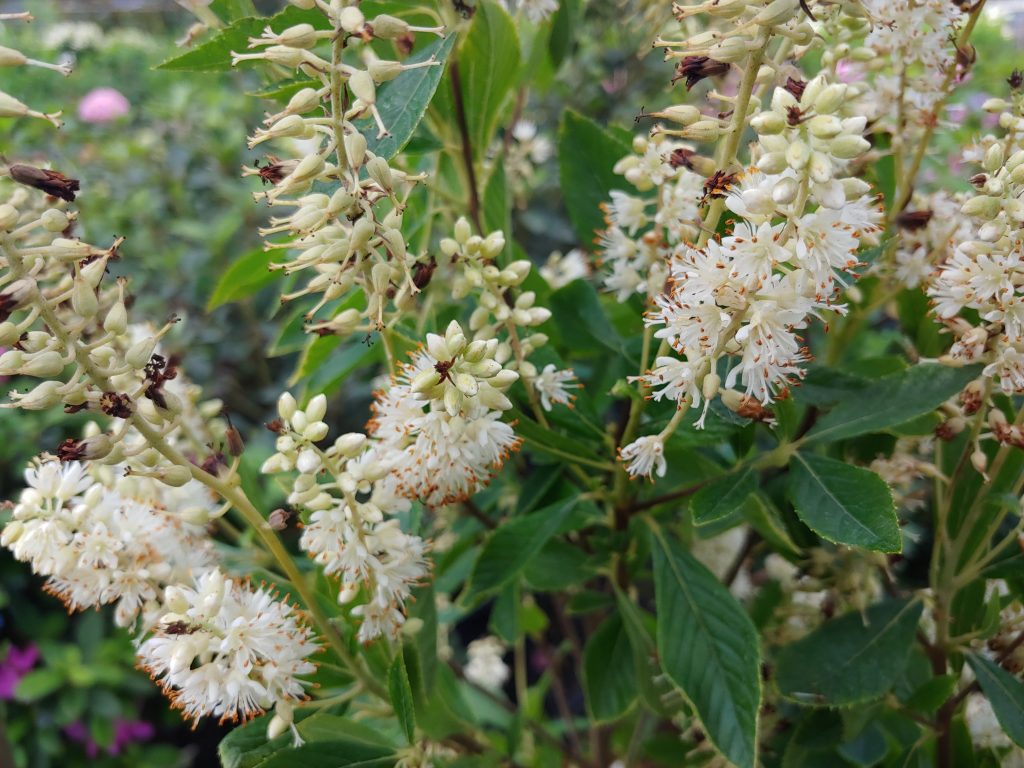
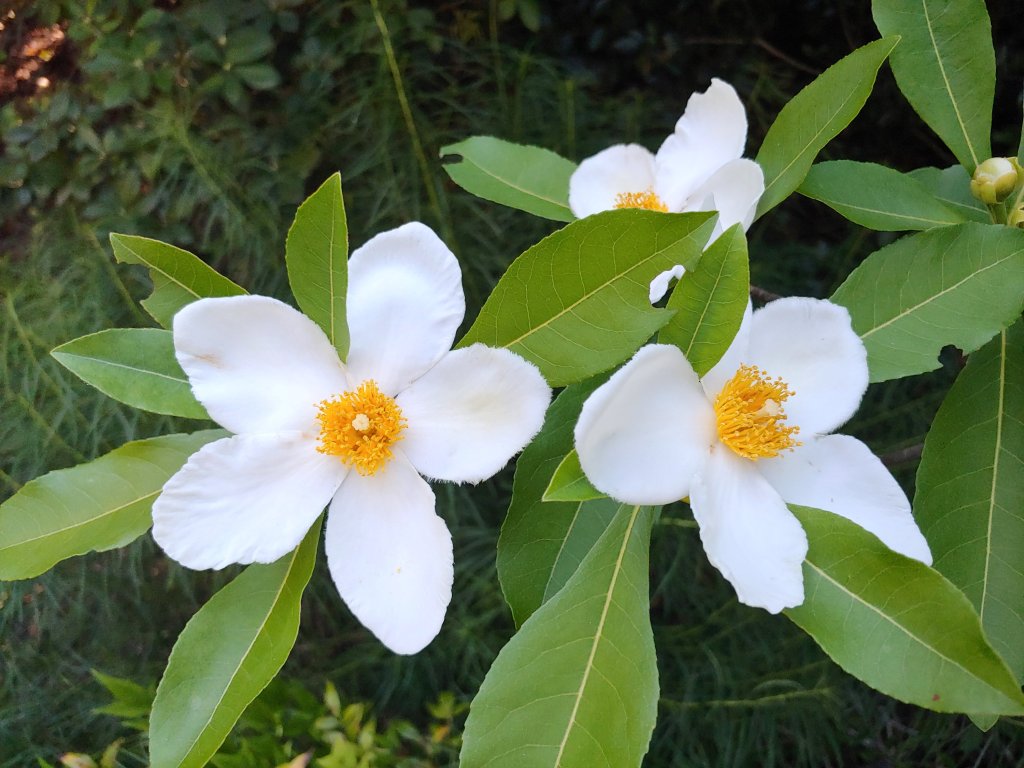
The shrubby Gordlinia (xGordlinia grandiflora, above) displays camellia-like blooms for weeks in late summer (also similar in appearance to Japanese stewartia and one of the parent plants in its cross, Franklinia).
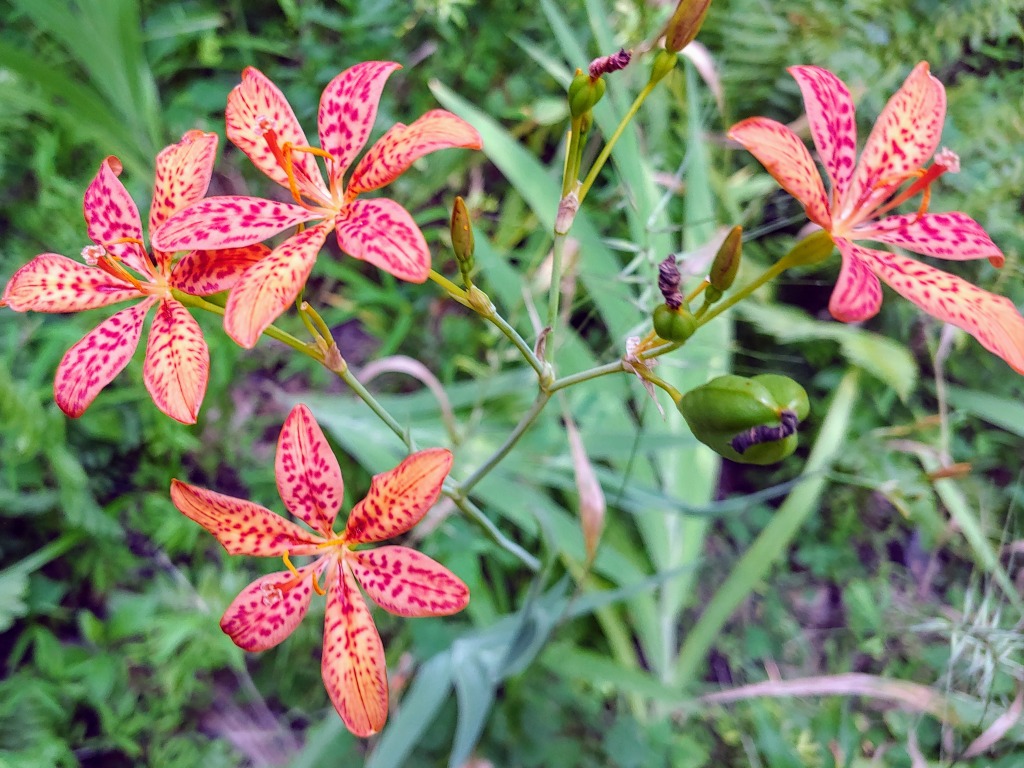
Blackberry lily (once Belamcanda chinensis, now Iris domestica, above) displays its lovely summer flowers. My wife and I have surprisingly spotted this uncommon, non-native in two woodland areas, we suppose from the gardens of houses that are long gone.

This unfortunate Vitex (above) is planted in ground that is too wet for its liking, but each year it manages handfuls of butterfly attracting blooms. While this shrub does not reach its potential, vitex is a large growing shrub that must be given adequate space.

The tall growing butterfly weed (Asclepias, above) attracts more bees than butterflies, but it is a host plant for the Monarch butterfly.
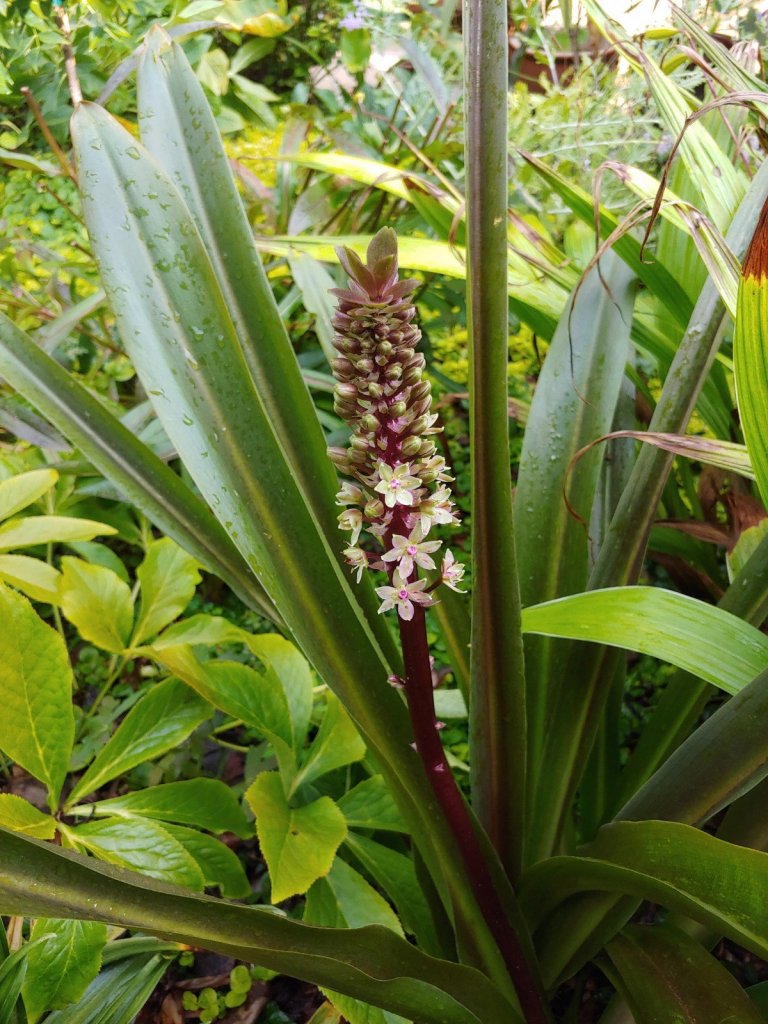
There are a variety of Pineapple lilies (Eucomis comosa ‘Sparkling Burgundy’, above) flowering in the garden, and several that were transplanted from a clump of ‘Sparkling Burgundy’ that are not flowering because they are too shaded. These will be moved to sunnier spots.

‘Worcester Gold’ caryopertis (above) has been been supplanted by newer introductions, but it performs wonderfully along our driveway. Other green leafed blue mist shrubs are just beginning to show color.

The Korean wax bell (Kirengshoma koreana, above) and yellow wax bell (K. palmata) are grown as much for sycamore-like foliage as the scattered yellow, summer blooms.
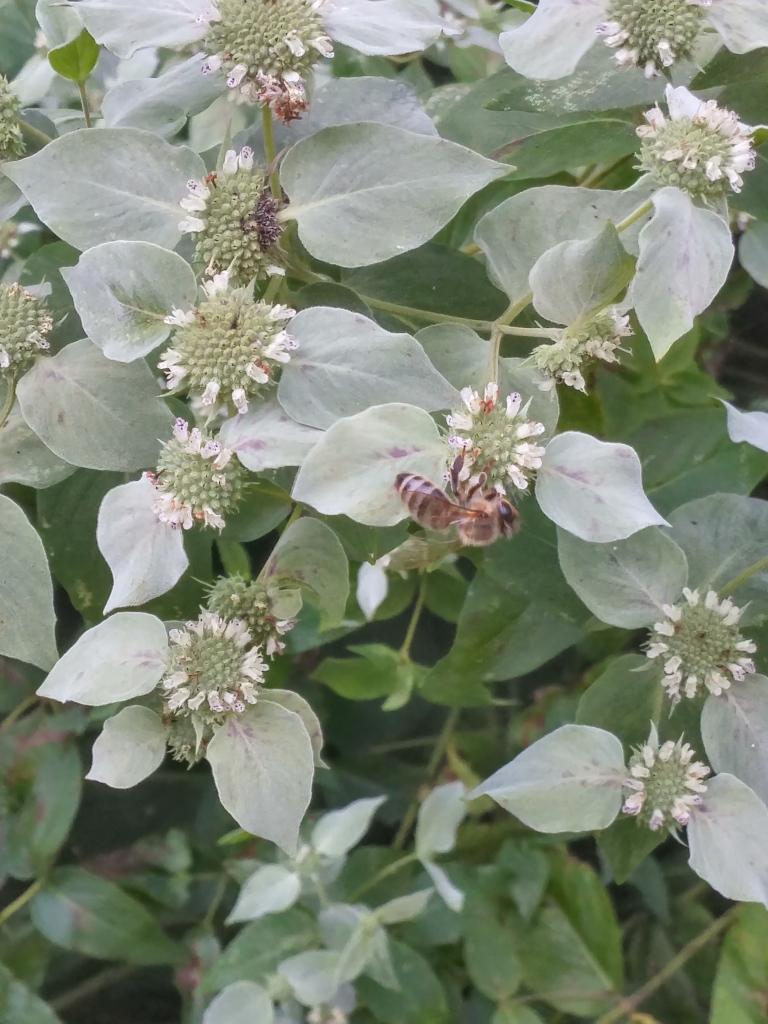
The pollinators’ heaven, Mountain mint (Pycnanthemum muticum, above) must certainly attract more bees and wasps than any other flowering plant. On a sunny afternoon it is alive with buzzing pollinators. Mountain mint is a somewhat aggressive spreader, but easily controlled by pulling new plants as they emerge. This one is planted in damp ground where it had plenty of room to spread, and it has taken advantage.
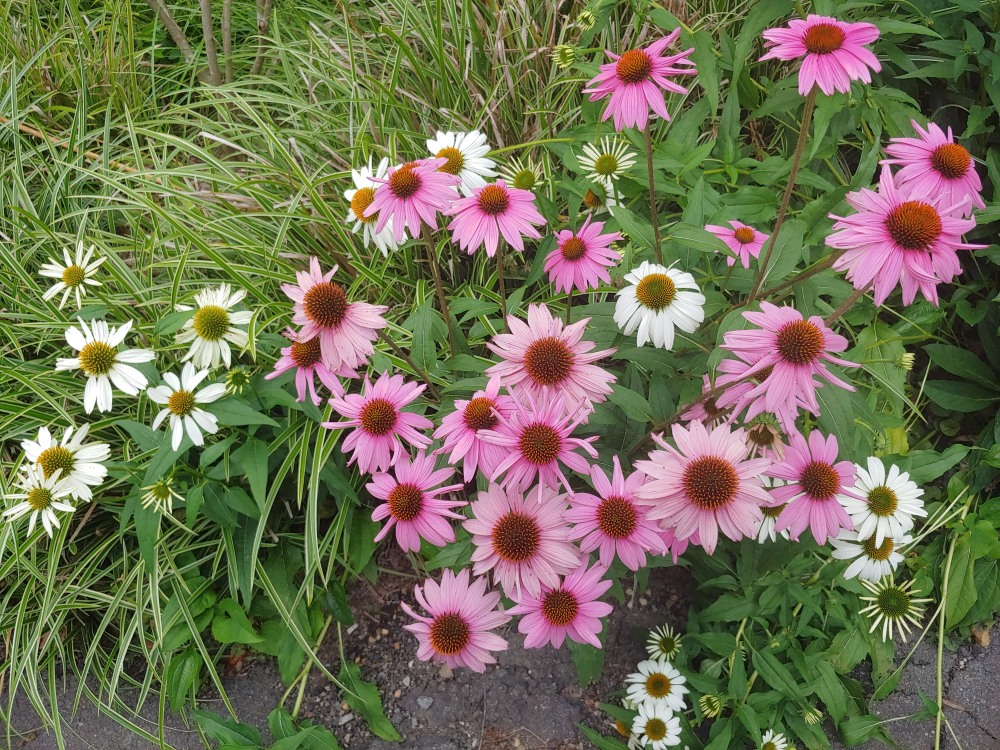
A single, small clump of white flowered coneflower (Echinacea, above) has seeded to spread to more whites and pink-purples that are typical of the native.
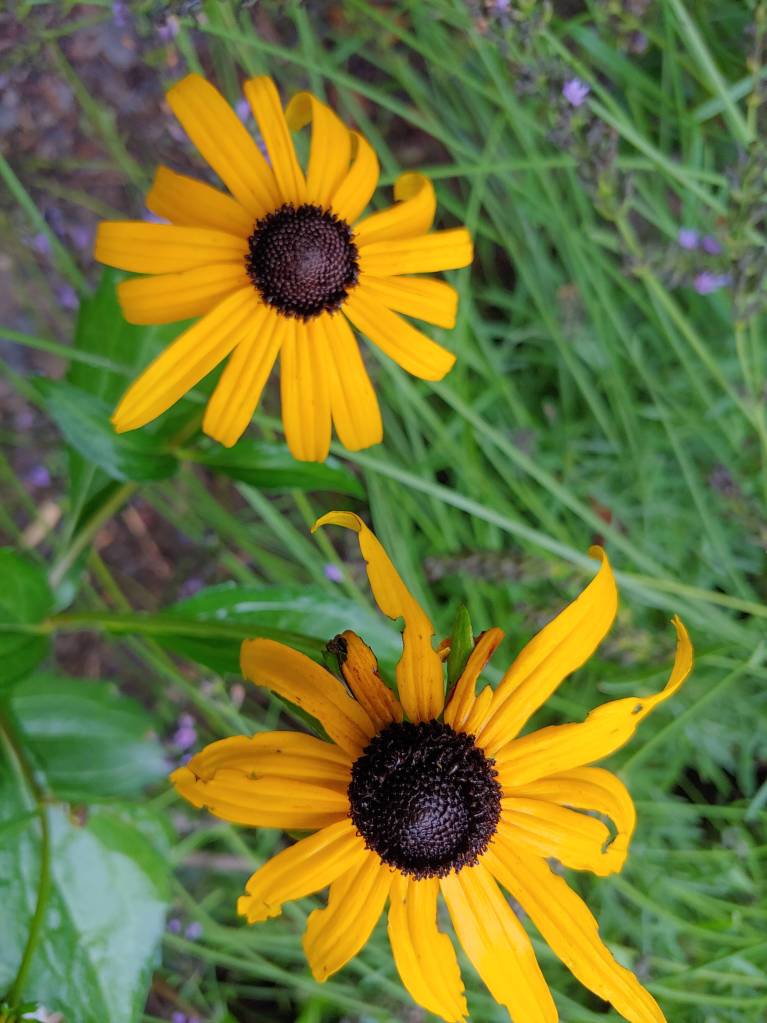
A seedling Black eyed Susan (Rudbeckia) appeared a year ago. It’s been years since I’ve grown it, since it finally disappeared as it became too shaded. This one is only partially sunny, so it will likely fade in a few years.
I am enjoying my Crepe Myrtle, Hardy Hibiscus
And a sea of Daisies!
Dave, thank you for the ongoing beautiful display from your garden. It’s been a pleasure watching vicariously as I am loathe to go out in my Virginia garden when it’s in the 90s. The only thing that gets me out is my raised vegetable garden.
I will have to seek out some Mountain Mint as my vegetables sometime lack pollination because of the too few bees here in my garden. I have never seen it in Garden Centers including Meadows Farms.
I admire your brilliant mind that remembers the many, many plants that are in your garden.
I am fortunate that more than half of the garden is shaded, so I can go out into the sunny spots, then cool off in the shade. Also, thanks for the ‘brilliant mind’ comment, though I know it’s only half true.
How do you overwinter the Curcuma indoors?
After it withers in a light frost I cut the foliage, bring it into the basement, which is consistently in the upper sixties through the winter, and forget about it. The two get watered 2-3 times, and often I set a smaller pot on top so it might get a trickle of moisture. They go outdoors in May with whatever else is stashed in the basement. They’ve survived three winters doing this.
Thanks! Maybe when these go on clearance in September I’ll have to try this
Mine were Home Depot spring clearance, but they haven’t had them again, not that I regularly shop there.
Clethra? I must look that one up.